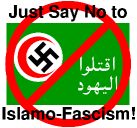TALE OF THE POPE'S HUMANITY
A Personal Tale of the Pope's Humanity
Roger Cohen, foreign affairs columnist for the Times international edition, files a touching personal reminiscence on Wednesday of an early incident from the life of Karol Wojtyla, later to be known to the world as Pope John Paul II, "The Polish Seminary Student And the Jewish Girl He Saved."
He begins: "Here is a family story of Pope John Paul II, an intimate tale of his humanity. During the summer of 1942, two women in Krakow, Poland, were denounced as Jews, taken to the city's prison, held there for a few months and then sent to the Belzec death camp, where in October they were killed in primitive Nazi gas chambers by carbon monoxide from diesel engines. Their names were Frimeta Gelband and Salomea Zierer; they were sisters. As it happens, Frimeta was my wife's grandmother. Salomea -- known as Salla -- had two daughters, one of whom survived the war and one of whom did not. The elder of these daughters was Edith Zierer. In January 1945, at age 13, she emerged from a Nazi labor camp in Czestochowa, Poland, a waif on the verge of death.
"Separated from her family, unaware that her mother had been killed by the Germans, she could scarcely walk. But walk she did, to a train station, where she climbed onto a coal wagon. The train moved slowly, the wind cut through her. When the cold became too much to bear, she got down at a village called Jedrzejow. In a corner of the station, she sat. Nobody looked at her, a girl in the striped and numbered uniform of a prisoner, late in a terrible war. Unable to move, Edith waited. Death was approaching, but a young man approached first, 'very good looking,' as she recalled, and vigorous. He wore a long robe and appeared to be a priest. 'Why are you here?' he asked. 'What are you doing?' Edith said she was trying to get to Krakow to find her parents."
The future pope fed Edith and joined her on a train bound for Krakow. Thirty-three years later, she read that her savior had become pope. Eventually they were reunited, meeting twice, at the Vatican and in Jerusalem.
Sixty years on, Cohen reasons: "Pope John Paul II is widely viewed as having been a man of unshakable convictions that some found old-fashioned or rigid. But perhaps he offered his truth with the same simplicity and directness he showed in proffering tea and bread and shelter from cold to an abandoned Jewish girl in 1945, when nobody was watching. It was based in the belief that, as he once put it, 'a degradation, indeed a pulverization, of the fundamental uniqueness of each human being' was at the root of the mass movements of the 20th century, Communism and Fascism. Stalin once contemptuously asked, 'How many divisions has the pope?' Starting with his 1979 visit to Poland, John Paul gave an answer. Perhaps the strength that enabled him to play a central role in ending Communism and the strength that led him to save Edith Zierer did not differ fundamentally. Like his healing ecumenism, those acts required the courage born of a core certitude."



























No comments:
Post a Comment